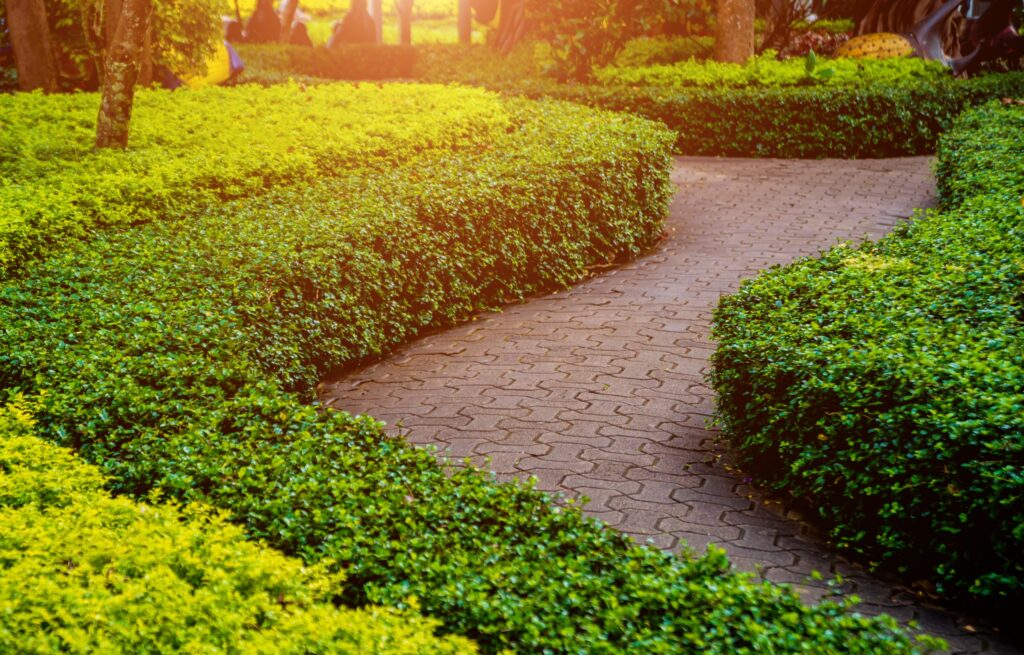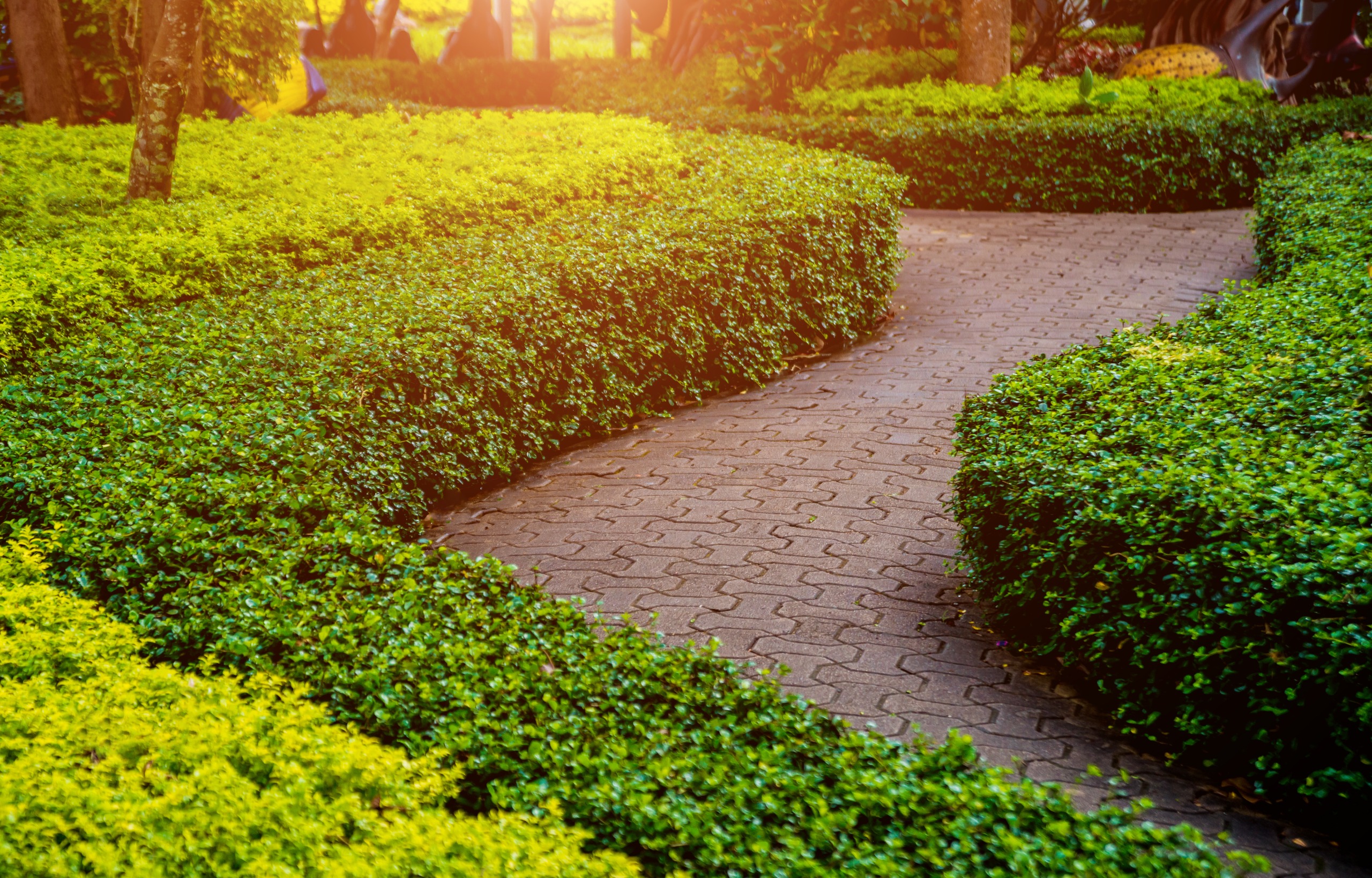Sustainable Landscape Design: Integrating Eco-Friendly Practices into Your Outdoor Space
Introduction
Sustainable landscape design is revolutionizing how commercial spaces interact with the natural environment. It’s not just about aesthetic appeal; it’s a conscientious approach to conserving resources, enhancing biodiversity, and creating a harmonious balance between built and natural environments. Commercial entities increasingly recognize the importance of sustainable landscape design for their environmental benefits and ability to create more pleasant and productive outdoor spaces.
As leading landscape design and construction firms, we understand the intricate balance between functionality and sustainability. Our projects, tailored to the unique needs of each commercial space, embody the principles of eco-friendliness and aesthetic beauty. This blog post delves into the various aspects of sustainable landscape design, offering insights and guidance for commercial spaces looking to embark on this green journey.
The Role of Landscape Design Companies in Commercial Sustainability
When transforming commercial outdoor spaces, partnering with professional landscaping design companies near me can make all the difference. These companies specialize in creating designs that are not only visually stunning but also environmentally responsible. They employ various strategies, from using native plants to implementing efficient water management systems, ensuring that your commercial landscape is sustainable.
Landscape design and installation by experts are critical steps toward achieving a green outdoor space. These professionals understand the local ecology and can tailor their designs to suit the specific environmental conditions of your area. Their expertise in landscape design ensures that every element of your outdoor space, from the selection of plants to the construction of hardscape features, aligns with sustainable practices.
Innovative Techniques in Sustainable Landscaping
Innovative techniques are at the heart of sustainable landscaping, especially in the commercial sector. Landscape design companies are constantly exploring new ways to integrate eco-friendly practices. One such technique uses permeable paving materials that allow water to seep through, reducing runoff and promoting groundwater recharge. Another is the creation of green roofs and living walls, which not only enhance the aesthetic appeal of a building but also contribute to thermal regulation and air purification.

The best landscape design companies incorporate advanced technologies like smart irrigation systems that optimize water use. These systems use sensors to monitor soil moisture levels and weather conditions, ensuring that plants receive the right amount of water at the right time, thereby minimizing waste and conserving this vital resource.
Water Management and Conservation Strategies
Water management is a cornerstone of sustainable landscape design, particularly in commercial settings where large areas must be maintained. Landscape design and construction companies are adept at implementing water conservation strategies, such as xeriscaping, which involves choosing drought-resistant plants and minimizing the use of turf. This approach not only reduces water consumption but also lowers maintenance needs.
Rainwater harvesting is another technique gaining traction in commercial landscapes. Businesses can significantly reduce their dependence on municipal water supplies by collecting and storing rainwater for irrigation. This practice not only conserves water but also helps manage stormwater runoff, thereby contributing to the overall health of the local watershed.
Integrating Renewable Energy in Landscape Design
Integrating renewable energy sources like solar panels into landscape design is a forward-thinking approach adopted by leading landscape design-build firms. These features can power lighting and other electrical needs in the outdoor space, reducing the commercial property’s carbon footprint. Solar-powered lights and water features are sustainable and add a modern touch to the landscape.
Additionally, strategically placing trees and shrubs can significantly affect energy conservation. Properly positioned, they can provide shade to buildings, reducing the need for air conditioning in warmer months. In colder seasons, they can act as windbreaks, helping to retain heat within the premises.
The Economic Benefits of Sustainable Landscaping for Businesses
Adopting sustainable landscaping practices is an environmental statement and a smart economic decision for businesses. Landscape design companies specializing in eco-friendly designs help reduce long-term maintenance costs. Native plantings, for instance, require less water, fewer pesticides, and minimal care compared to non-native species, leading to significant savings. Moreover, a well-designed sustainable landscape enhances the curb appeal and value of the property, potentially increasing customer and client attraction.
Energy savings is another crucial economic benefit. Features like shade trees and living walls can significantly reduce heating and cooling costs. In addition, sustainable practices can qualify businesses for various environmental certifications and tax benefits, further improving their financial outlook.
Maximizing Space Utilization with Eco-Friendly Designs
A key challenge for landscape design and installation in commercial spaces is the efficient utilization of space. Landscape design-build firms excel in creating multi-functional areas that cater to various needs while maintaining ecological integrity. For example, a seating area can double as a rain garden, offering relaxation space while managing stormwater runoff.
Outdoor spaces can also be designed to promote biodiversity, with areas dedicated to native plants and habitats that attract local wildlife. This not only adds to the aesthetic beauty of the space but also contributes to the local ecosystem. A well-planned landscape design, therefore, achieves the dual goal of maximizing space utility and enhancing the environmental value of the property.
Sustainable Maintenance Practices for Long-Term Benefits
Sustainable maintenance practices complement sustainable landscape design. Landscape design companies often offer guidance on eco-friendly maintenance to ensure the longevity and vitality of the landscape. This includes organic pest management, mulching to retain soil moisture and proper pruning techniques.
Regular but mindful maintenance ensures that the landscape continues functioning as intended, providing environmental benefits and reducing the need for costly repairs or alterations. It’s a long-term approach that sees the landscape as a living, evolving space rather than a static feature.
Conclusion
Sustainable landscape design represents a commitment to environmental stewardship and a wise investment for commercial entities. By working with a landscaping design company near me, you can transform your outdoor space into an eco-friendly haven that benefits both the environment and your business. We invite you to explore our website and discover how our landscape design and construction expertise can help create your sustainable outdoor space. Let’s work together to impact the planet and your bottom line positively.



